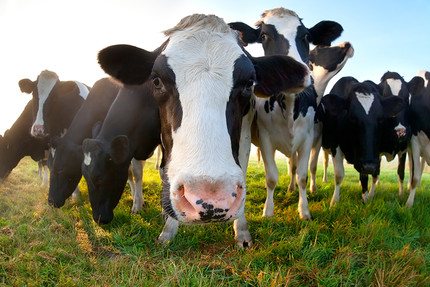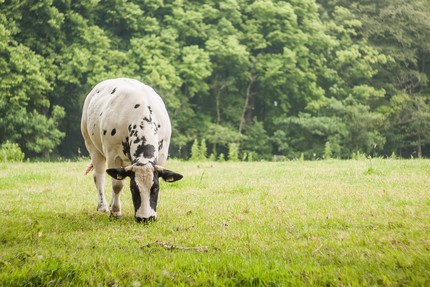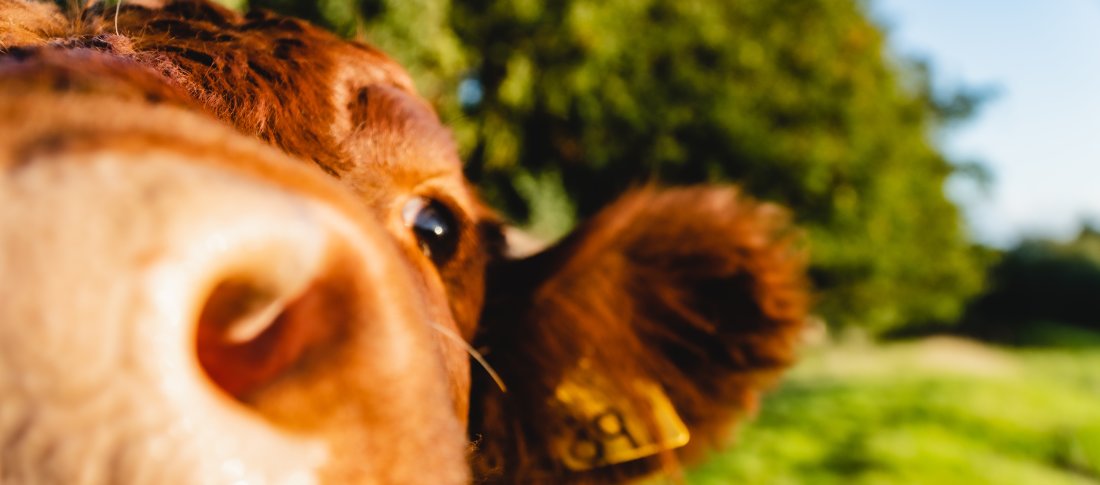There’s no denying how eagerly we dairy farmers await spring. After a long winter of indoor housing and all the work that it brings, the sight of your herd as they make their way onto their lush green fields is one that brings a smile to even the most hardened of faces.
But with the new season and a change in management regime, various questions come to light when it comes to maintaining the health, productivity and profitability of your dairy herd.
So here’s the lowdown on the truths and tales of spring turnout.
Truth or tales? Any field is a good field
Tale. While ryegrass is high in those ever-topical Omega-3 fatty acids in spring, your best field for first turnout is one that has been rested since late September or early October, with a sward length of around 8-10cm.
Where possible you should look to graze fields with dryer, lighter soil over wet, heavy ground and ensure your stocking levels match the ground and weather conditions.
Once your grass has been chewed down to 5 or 6cm, it’s time to move your cows on to a fresh field. This allows sunlight to reach the new grass shoots and young clover plants, and enhances sward production – allowing the field to recover quicker.

Truth or tale? Nitrogen fertiliser works at its best when soil temperatures reach 5oC for four days or more
Truth. Whether you fertilise or not is entirely your choice, but it has been determined that for grass to respond best to nitrogen fertiliser, soil temperatures should be 5oC or higher, to a depth of 10cm, for at least four consecutive days.
It goes without saying that it’s best to avoid fertilising in wet conditions to prevent leaching into waterways and damage to the grazing by heavy machinery.
Truth or tale? Testing of soil and pasture for nutritional make-up is a waste of time
Nothing could be further from the truth. Dairy cows are particularly susceptible to grass staggers at turnout time. It’s a potentially deadly condition caused by magnesium deficiency – with grass being low in magnesium and lactating cows losing magnesium through their milk, it can take hold rapidly.
While magnesium supplements provide effective protection, it’s essential to identify just how much magnesium and other nutrients are needed, via soil and grass analysis. This will enable you to optimise the health and productivity of your dairy herd.
Truth or tale? Feed fats are still crucial in spring
True, true, true! Contrary to the belief that fat is just something we supplement in winter to aid body condition and enhance milk production when natural pasture is not available ??, fat is crucial to dairy cows, all year-round.
With grass only providing about 3-4% fat and a high-yielding dairy cow requiring around 6-7% of fat in the dry matter, there is an obvious shortfall when it comes to achieving optimum productivity, health and fertility. It’s therefore essential to consider a well-balanced fat supplement in order to reach your herd’s potential.
Megalac’s range of feed fat supplements have been proven to increase fertility, milk yield, milk fat yield and milk protein yield when feeding the right supplement for the cow’s requirements at their individual stage of lactation and with your desired outcome in mind.
>> Are you feeding enough fat to your dairy cows?

Truth or Tale? Mega-Fat 88 is the ideal supplement to beat butterfat depression
True. High-C16 supplements such as Mega-Fat 88 can help alleviate the negative effects of young spring grass on reducing milk fat percentage.
Such negative effects arise as a result of spring grass being high in sugar and oil but low in fibre. This means it is more rapidly fermentable, leading to a compromised pH in the rumen. So, with grass passing through the digestive system more rapidly and with a higher oil concentration, there is greater risk of acidosis and notable milk fat depression.
>> A guide to maintaining good rumen health in your dairy herd
With multiple fatty acids creating the building blocks of fat, it is easy to target-feed each fatty acid in order to achieve your desired outcome.
The C16 fatty acid (palmitic acid) is known to promote the partitioning of nutrients to milk and improve milk fat production. And so, Mega-Fat 88, which contains 88% (see what we did there?) of the C16 fatty acids, is the ideal supplement to combat butterfat depression when your cows go onto their spring grazing.
Truth or Tale? A ready supply of water is vital to good milk yields
True. Despite spring in many parts being renowned for being rainy, it’s essential to provide a plentiful supply of the wet stuff. Your average dairy cow can guzzle 100 litres plus per day, so plenty of clean, well-maintained troughs, spread throughout your pasture, milking shed and feeding areas is essential for keeping the white stuff flowing.
